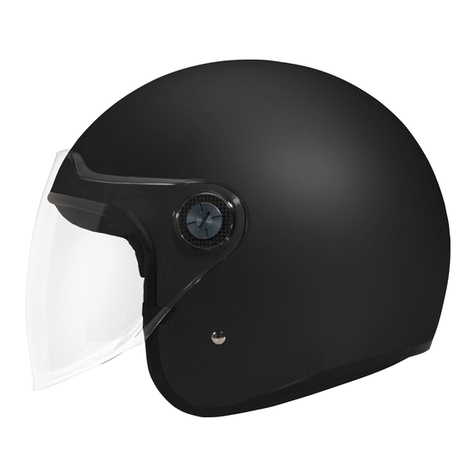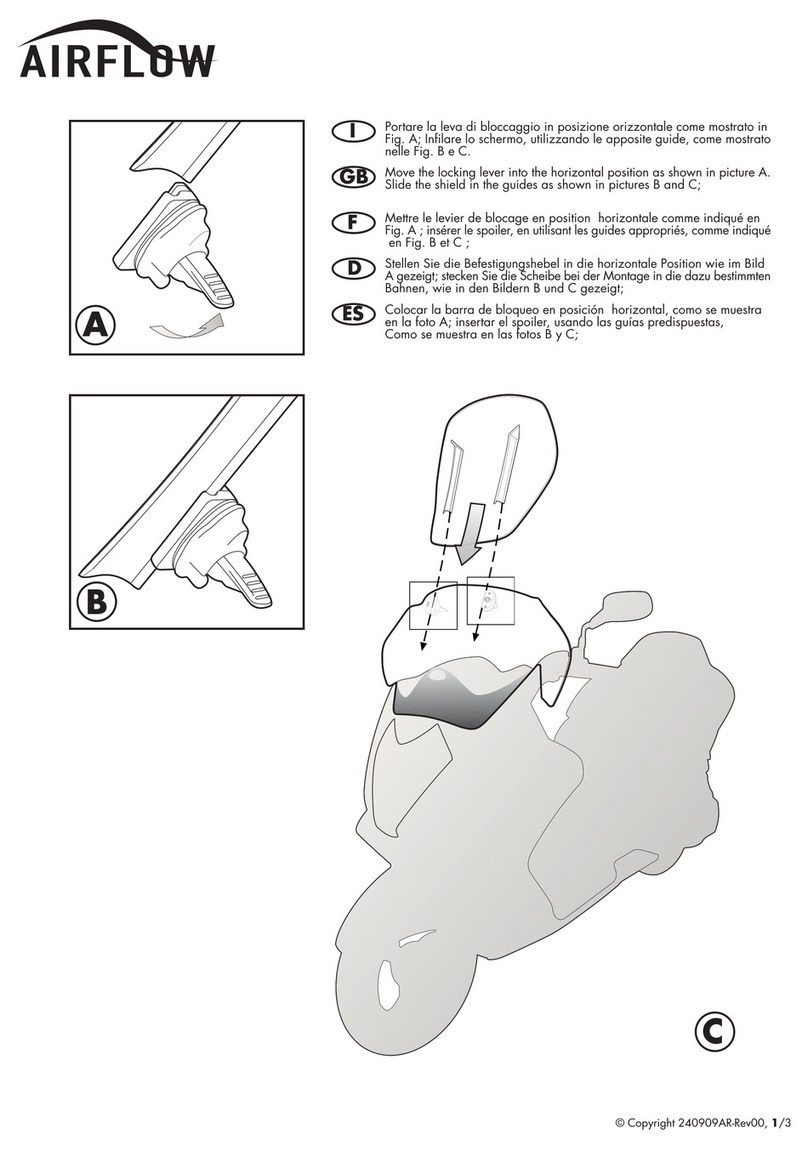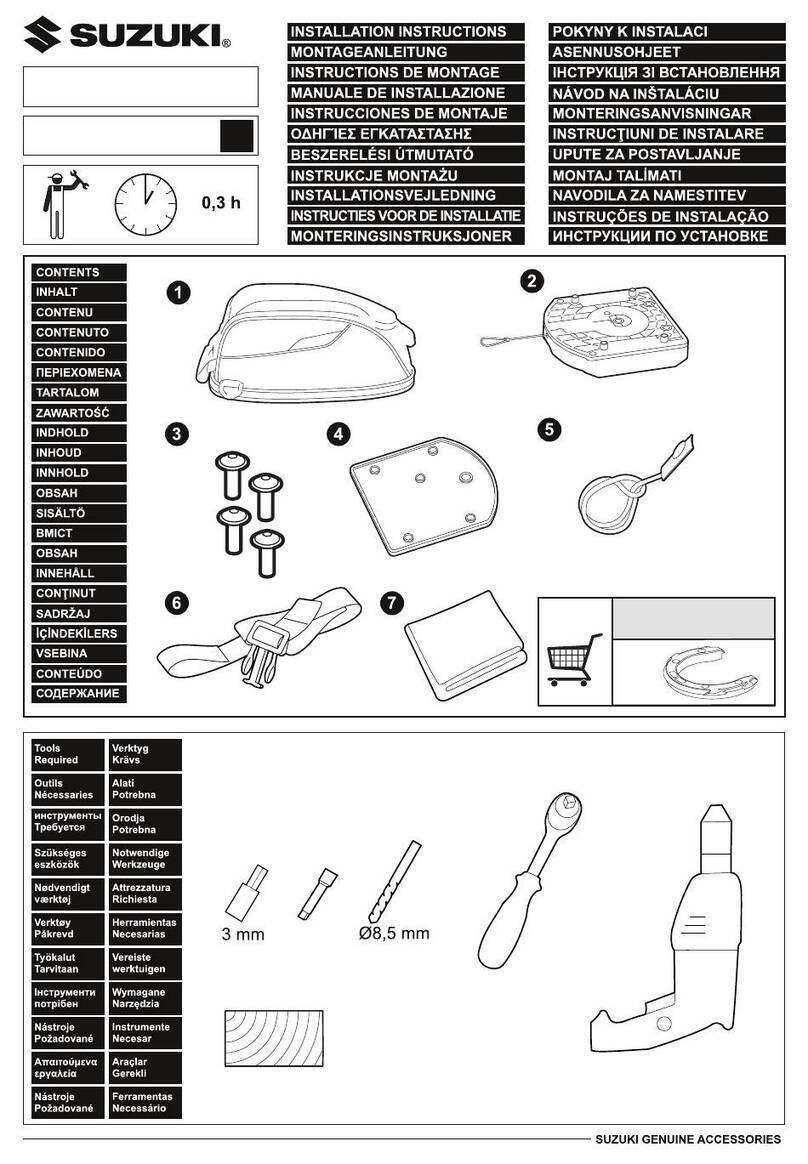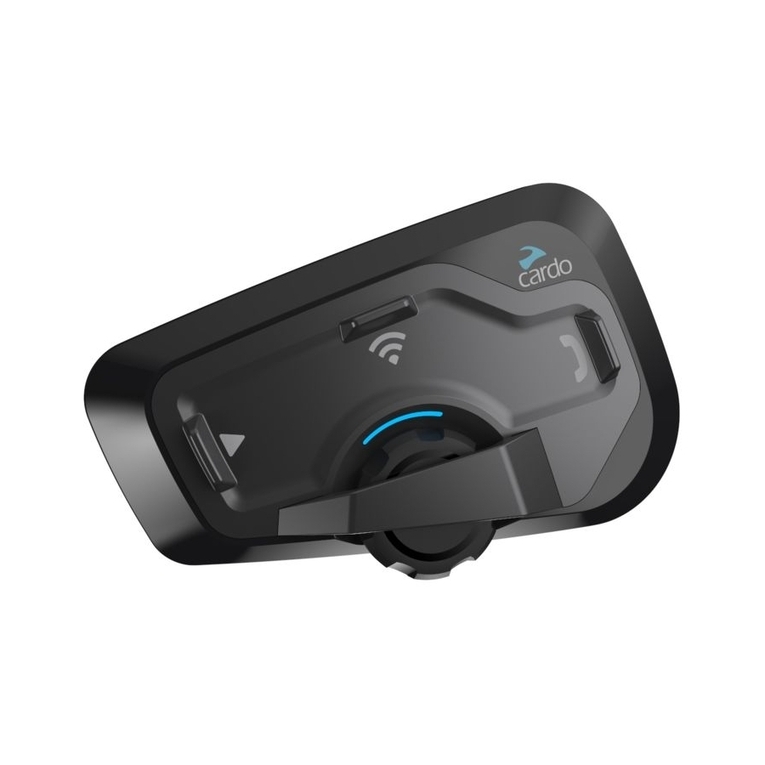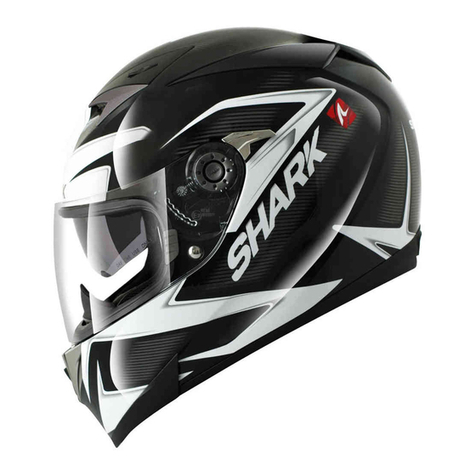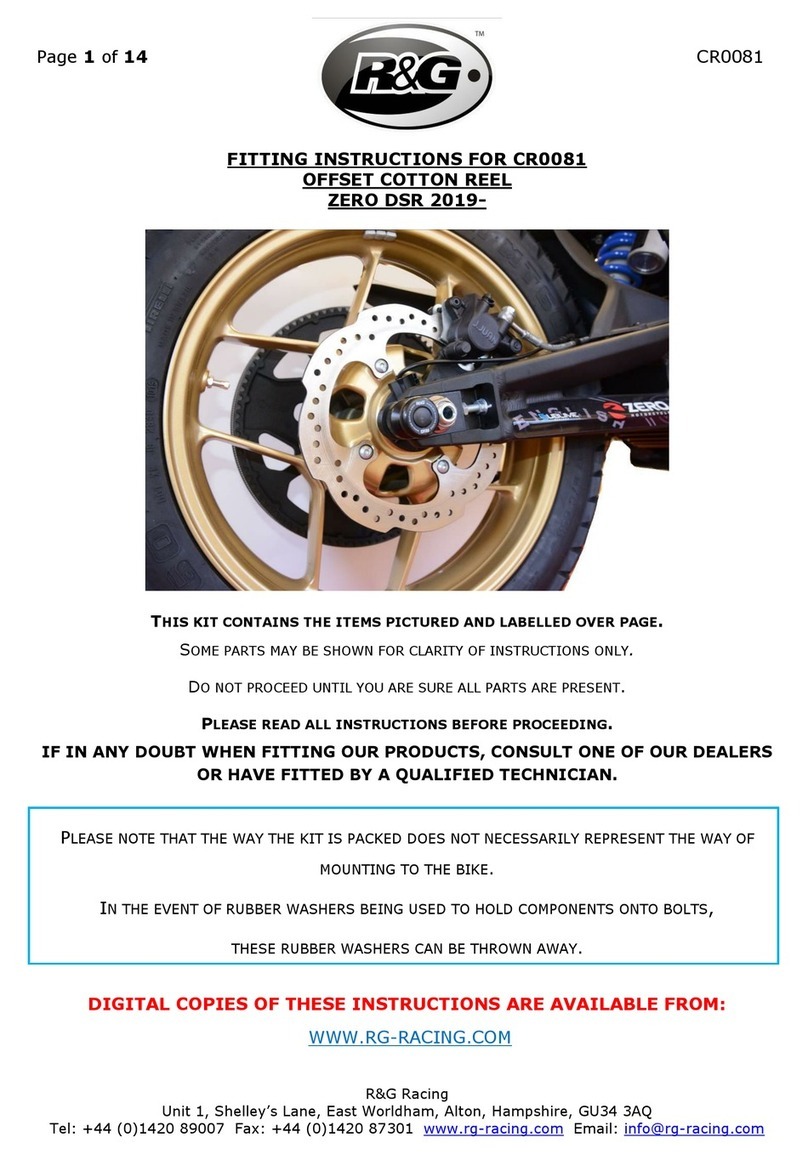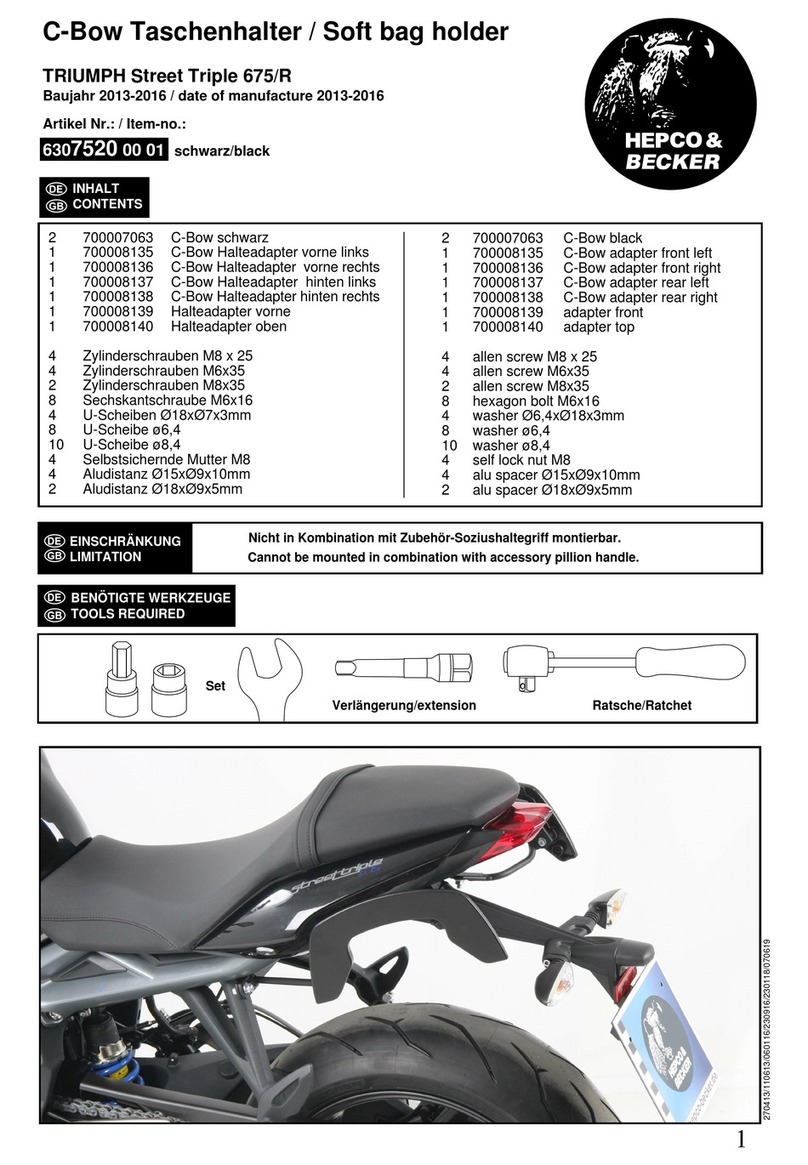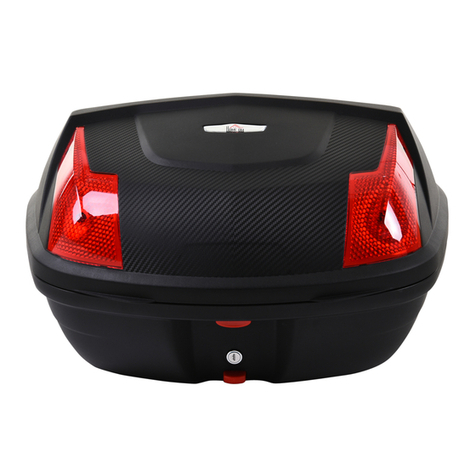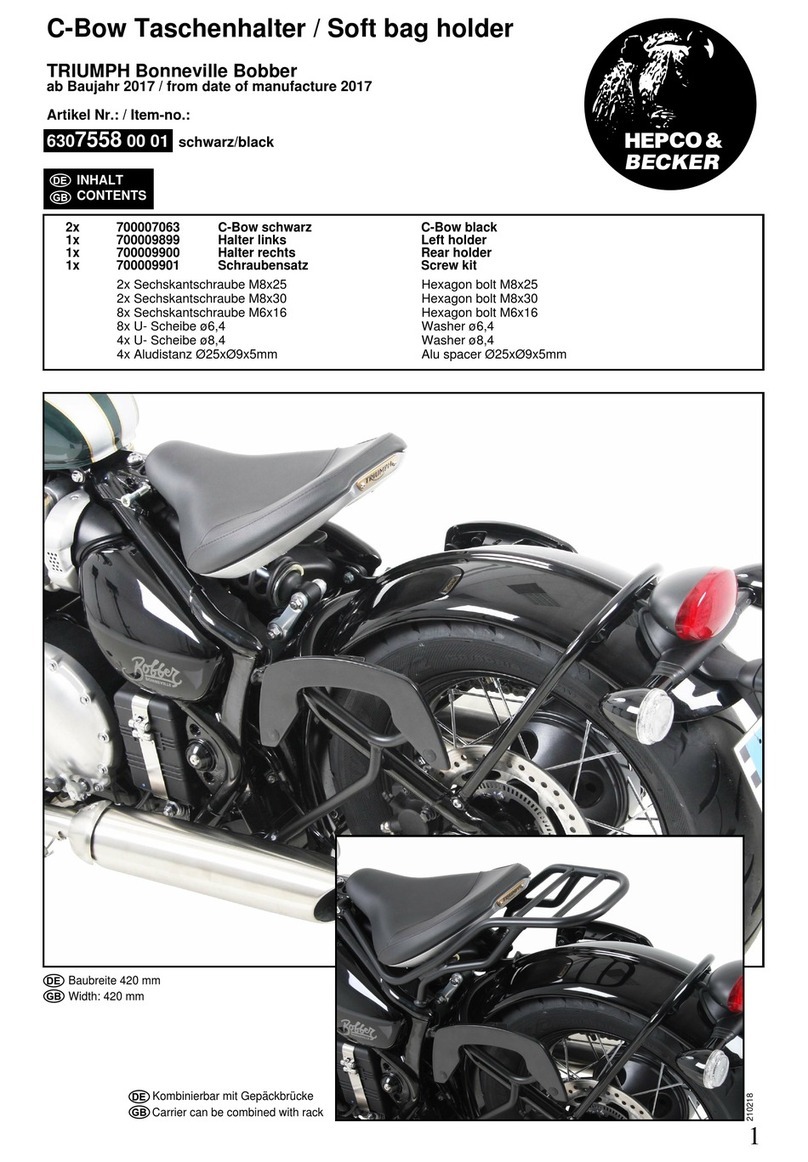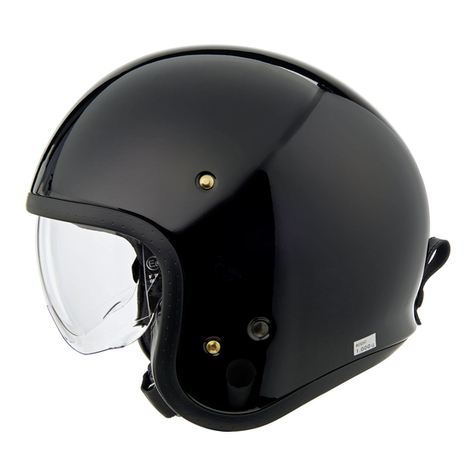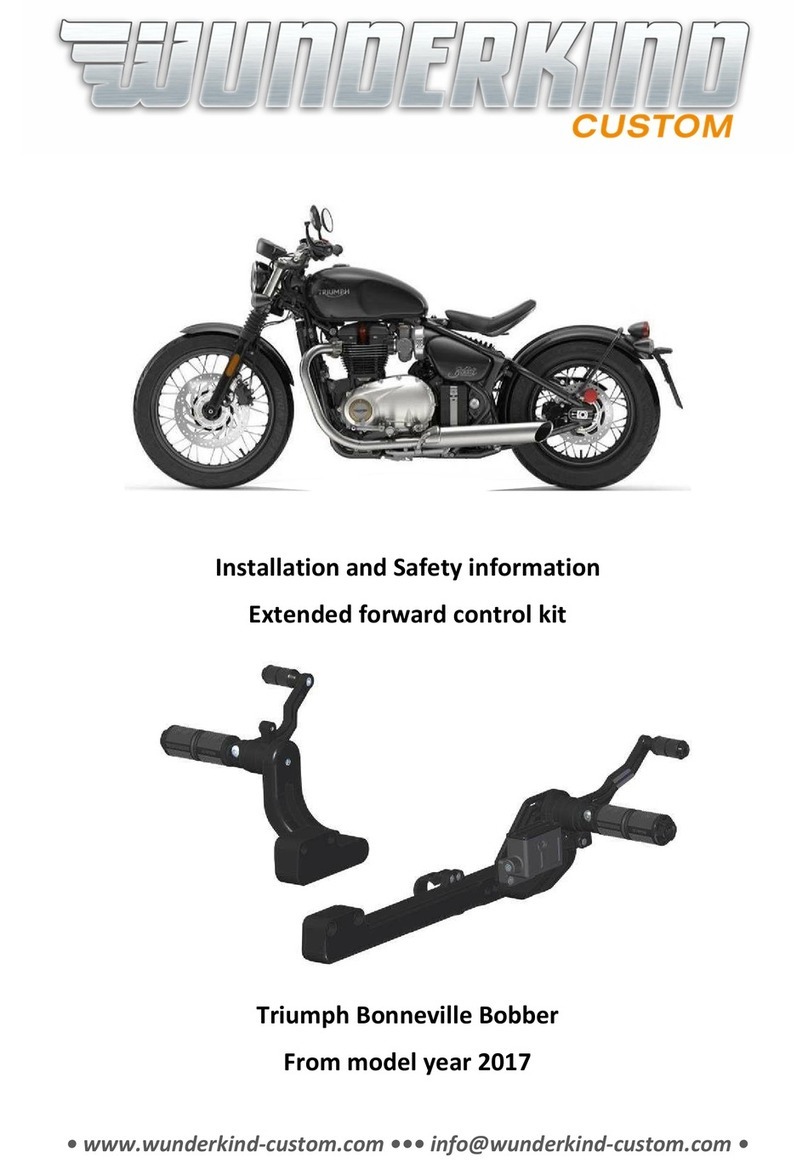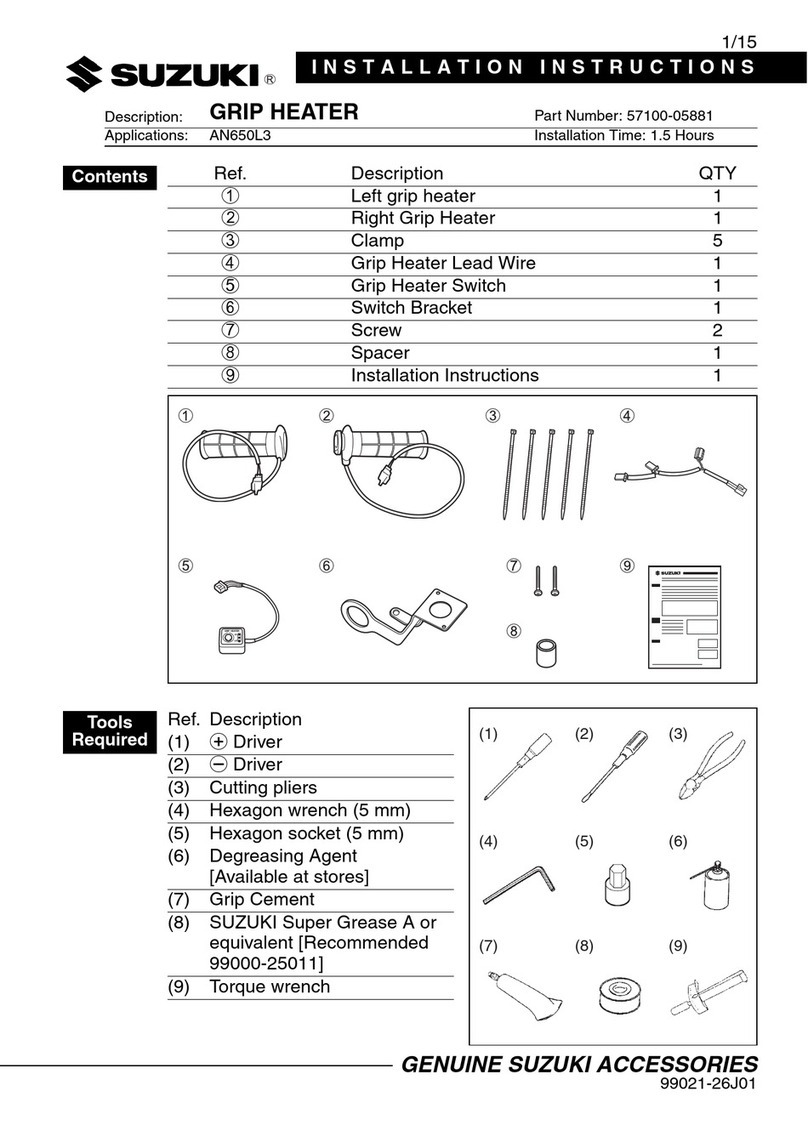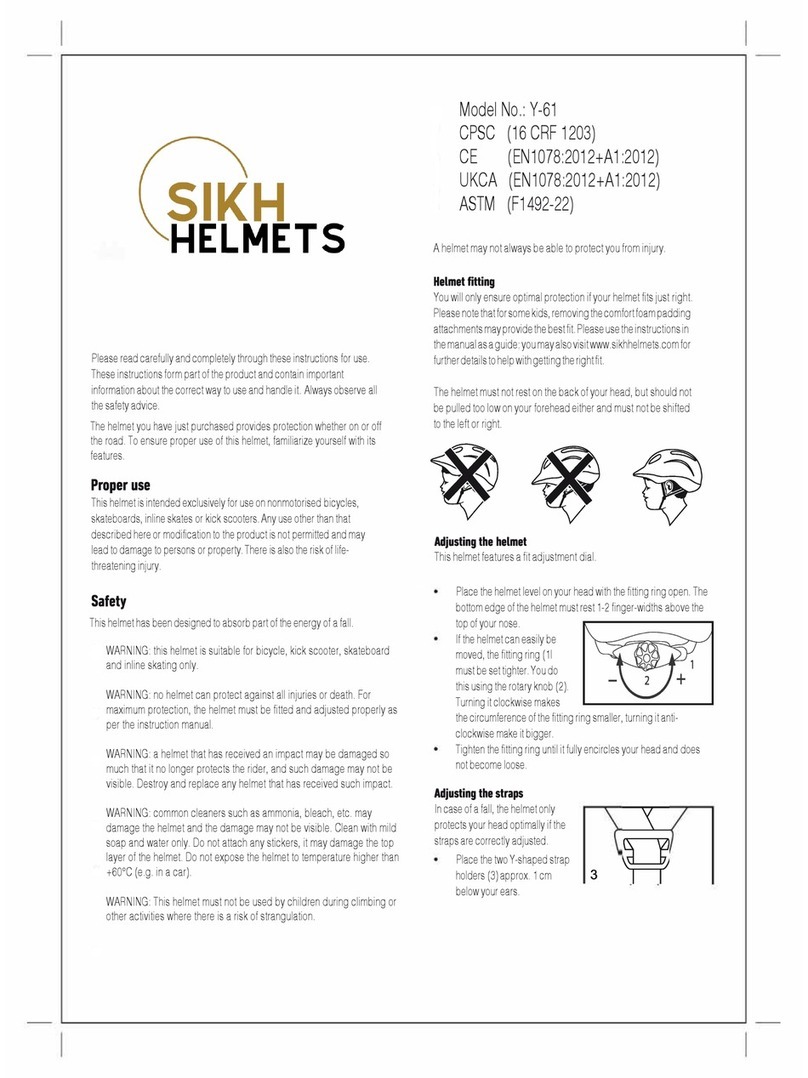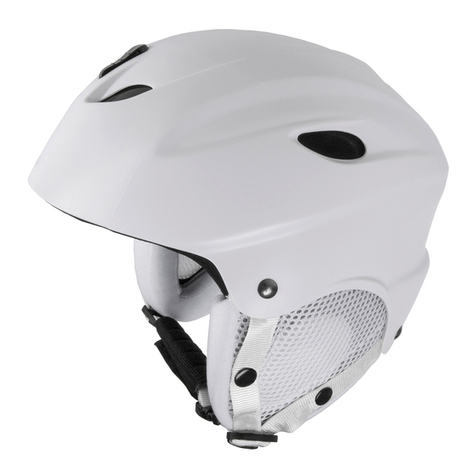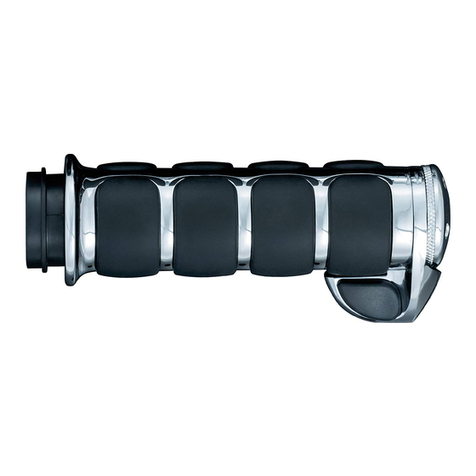forma LEGACY Quick start guide


USEFUL INFORMATION
PROTECTIVE MOTORCYCLE FOOTWEAR
GB
USE FOR WHICH THE PROTECTOR IS INTENDED
Personal Protective Equipment (PPE), Category 2, for motorcycling use.
Motorcyclists’ footwear is intended to give a degree of mechanical protection to the foot, optionally the ankle and/or part
of the shin in accidents without significantly reducing the ability of the rider to control the motorcycle and operate the
foot controls.
The boots, when used and worn correctly, are meant to reduce injuries risks, limiting the consequences of motorcycle
accidents; mainly the severity of impact cut and impact abrasion with the road surface and the impact forces transmission
due to crashes against conflicting vehicles, road furniture, and road surfaces.
The protective device object of this Information note is strictly limited to motorcycle use.
In order to ensure the best protection against motorcycling injuries, ALWAYS use the boots together with other Certified P.P.E.
(garments, gloves, helmet etc...) that are intended to protect other parts of the body.
HAZARDS AGAINST WHICH SOME PROTECTION IS GIVEN
The boots offer LIMITED protection of the foot against cuts, lacerations and abrasions that may occur when hitting the
ground or road surface after falling from a motorcycle/scooter; reduction of the severity of contusions and fractures in
case of impact.
IMPACT ZONE
PROTECTION
HAZARDS AGAINST WHICH PROTECTION IS NOT GIVEN
These boots cannot guarantee protection against traumas caused by bending, twisting, torsions or against traumas
provoked by extreme movements. They also and cannot prevent crushing as the result of striking an object.
WARNINGS AND USE LIMITATIONS
- NO boots can guarantee a total protection from all possible impacts or abrasions.
- Motorcycling is an inherently dangerous activity and may result in serious personal injuries including death; wearing
protective equipment should not be an excuse for increasing readiness to take risks.
- Always follow the specific use instructions of these boots.
- Do not use the protective device boots for other uses: improper use may seriously reduce the protection provided.
CHECK PRIOR USE
- Before using these boots, make sure they are in good condition. In case of visible damages like breaches, unstitching, etc...
they shall be replaced.
- The boots properly work only when in good conditions and correctly positioned: the level of protection is effective as long
= zone 1 shin region
= zone 2 ankle region
radius curvature
see Table 5
= Area A
= Area B
Key
1
2
r
keys for CDEFG

as the items keep their original characteristics. Therefore, it is important that no modifications or repairs are made: do not
tamper with your boots.
- If the fixing devices consist of strips, straps, elastic bands, hooks or alike, both their efficiency and their sealing must be
verified. If a Velcro closure is present, it should be checked for wear and tightness at regular intervals.
CARE, MAINTENANCE, STORAGE
- Remove dirt with a damp cloth only; for heavier soiling use damp cloths or soft brushes with lukewarm water (max 40°).
- Do not wash under running water.
- Do not use hot water, solvents or other chemicals.
- Use specific products for cleaning and maintaining leather.
- Do not leave exposed to direct sunlight.
- Do not leave exposed to extremely high or low temperatures.
- Never tamper with the boots in any of their parts.
- When not in use, the boots must be stored in a dry and well ventilated place.
- After use leave them dry in a well ventilated place, at room temperature; do not use dryer or other heating devices.
If the boots are damaged, or if there is any doubt about their condition they should be replaced immediately.
Complaints or replacement requests for which it has been established improper use will not be accepted.
INNOCUOUSNESS
All the materials used, of both natural and synthetic origin, as well as the processing techniques applied, have been
chosen to meet the requirements set forth in the European technical regulation in terms of safety, ergonomics,
comfort, solidity and innocuousness.
FIT & ERGONOMICS
When choosing your boots, select a pair that is the correct size and comfortable in your usual riding position. Please ensure
that you are able to easily operate your motorcycle controls.
In order to choose the correct size please check your foot measurements or consult your dealer.
In order to fully benefit from the protection offered by your boots, you should ensure that:
- The closures are fully fastened and fixed securely in place prior to mounting your motorcycle.
- Additional checks should be carried out to ensure that there are no loose or free-hanging ends that could be caught up in
the vehicle’s mechanisms whilst riding.
- The main closures and restraint mechanisms of these boots should always be securely fastened when in use while riding
a motorcycle. Otherwise, the boots’ability to provide protection in the event of an accident may be severely reduced.
- Never ride with main closures open during hot weather.
- Choose the correct size: loose or tight boots may hinder freedom and range of movements resulting in dangerous riding
conditions.
The retailer can provide you with further detailed information and assist you with advice on fit and adjustment.
DURATION AND DISPOSAL INSTRUCTIONS
The product lifetime is strictly related to its use and consequent material degradation.
At the end of your boot useful life be sure to not discard it in the natural environment: please follow your local / national
environmental regulations and discard it in an appropriate dumping area. Further information regarding these regulations
can be obtained from your local authorities.

CE MARKING EXPLANATION
(see inside label)
Pictogram provided by EN 13634:2017, to indicate:
- Intended use: motorcycling
- Performance level reached during laboratory tests (1 or 2)*:
- 1st X - Height of the upper
- 2nd X - Performance level achieved in the abrasion resistance testing
- 3rd X - Performance level achieved in the impact cut resistance testing
- 4rd X - Performance level achieved in the transverse rigidity of whole footwear testing
* Within Standard EN 13634:2017 “Level 1” performance is deemed as the minimum level required in order for the footwear to provide
useful protection in an accident, and offers footwear with an optimum comfort level to suit all riding types.Where riders feel that their
riding style or sport exposes them to an increased accident risk “Level 2” has been provided which offers increased performance - however,
it is likely that this additional level of protection has an increased penalty for the weight and comfort, so may not be acceptable to all riders.
- Optional requirements:
The tested boots could also offer additional protective functions. Check whether one or more of the following symbols indicating the
overcoming of optional tests are present:
IPA = Footwear meeting the requirements for ankle impact protection
IPS = Footwear meeting the requirements for shin impact protection
WR = Footwear meeting the requirements for resistance to water penetration
FO = Footwear meeting the requirements for resistance to fuel oil
SRA, SRB or SRC = Footwear meeting the requirements for slip resistance
B = Footwear meeting the requirements for uppers permeable to water vapour
WAD = Footwear meeting the requirements for water absorption/ desorption of the insole/insock
The number and issuing year of the European Standard of reference are displayed under the pictogram.
Given the particular protection offered, our motorcycling boots are classified as Personal Protective Equipment (PPE) according to the
requirements of the EU Regulation 2016/425. Their performances have been verified through the CE-certification procedure and laboratory
testing by RICOTEST Notified Body nr. 0498 (Via Tione 9, 37010 Pastrengo - Verona - Italy). RICOTEST equally confirms that the above
mentioned boots fulfil the requirements of the Norm EN 13634:2017.
The“CE”means that the product meets the basic health and safety requirements of the EU Regulation 2016/425
SDE Motorsport S.r.l. - Via Giorgione, 5 -31030 Caselle di Altivole (TV) Italy
Item designation
Size range available for article ….“FORV060”(ex)
“FORV060”(ex)
from EU 36
to EU 49 (ex)
EN 13634:2017
x x x x
optional
requirements
Pictogram inviting the user to read the User Manual
Date of production (month and year)04/2018 (ex)
DECLARATION OF CONFORMITY Download available through the following link on our website: www.formaboots.com/declaration

NOTA INFORMATIVA
CALZATURE DI PROTEZIONE PER MOTOCLISTI
I
USO PREVISTO PER LA PROTEZIONE
Dispositivi di protezione individuale (DPI), categoria 2, per l’uso motociclistico. Lo stivale da moto intende fornire, in caso di
incidente, un grado di protezione meccanica al piede, opzionalmente alla caviglia e/o parte della tibia, senza ridurre signi-
ficativamente la capacità del pilota di controllare la moto e azionare i comandi a pedale. Gli stivali, se utilizzati e indossati
correttamente, hanno lo scopo di ridurre I rischi di infortuni e limitare le conseguenze di incidenti in moto:principalmente la
gravità di taglio da impatto e all’abrasione con la superficie stradale e la trasmissione della forza d’urto a causa di collisioni
con veicoli, arredamento urbano e superficie stradale. L’uso del dispositivo di protezione individuale oggetto di questa nota
informativa è strettamente limitato ad un uso motociclistico. Al fine di garantire la migliore protezione contro gli infortuni
in moto, usare SEMPRE gli stivali insieme ad altri D.P. I Certificati (abbigliamento, guanti, casco ecc...) che sono destinati a
proteggere altri parti del corpo.
PERICOLI COPERTI DALLA PROTEZIONE
Gli stivali offrono una protezione LIMITATA del piede contro tagli, lacerazioni e abrasioni che si possono verificare a causa
di cadute dal mezzo (moto, motorino, ecc.) colpendo la superficie del terreno; riduzione della gravità delle contusioni e
fratture in caso di impatto.
IMPACT ZONE
PROTECTION
PERICOLI NON COPERTI DALLA PROTEZIONE
Questi stivali non possono garantire la protezione contro I traumi causati dalla flessione, torsione o contro traumi provocati
da movimenti estremi. Inoltre non possono evitare schiacciamenti in seguito ad aver colpito un oggetto.
AVVERTENZE E LIMITAZIONI D’USO
-NESSUNO stivale può garantire una protezione totale da tutti i possibili urti o abrasioni.
- Il motociclismo è un’attività intrinsecamente pericolosa e può causare lesioni personali gravi, tra cui la morte; indossare
dispositivi di protezione non deve essere una scusa per aumentare la capacità di assumersi dei rischi.
- Seguire sempre le istruzioni d’uso specifiche di questi stivali.
- Non utilizzare i Dispositivi di Protezione Individuale per altri usi: l’uso improprio può ridurre seriamente la protezione
fornita.
VERIFICA PRIMA DELL’UTILIZZO
- Prima di utilizzare questi stivali, assicurarsi che siano in buone condizioni. In caso di danni visibili, come rotture, scuciture,
ecc... essi devono essere sostituiti.
- Gli stivali si devono utilizzare solo se in buone condizioni e correttamente posizionati e indossati: il livello di prote-
= zone 1 shin region
= zone 2 ankle region
radius curvature
see Table 5
= Area A
= Area B
Key
1
2
r
keys for CDEFG
This manual suits for next models
2
Table of contents
Languages:

